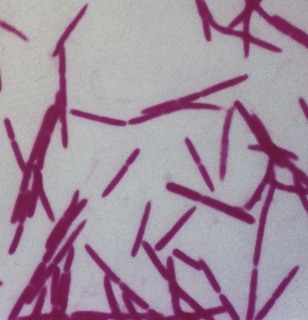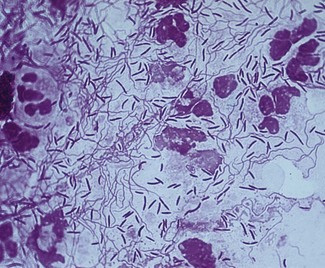Chapter 18 Fusobacteria, Leptotrichia and spirochaetes
Fusobacteria
Fusobacterium nucleatum
Characteristics
Gram-negative, strictly anaerobic, cigar-shaped bacilli with pointed ends (Fig. 18.1). Cells often have a central swelling. A Gram-stained smear of deep gingival debris obtained from a lesion of acute ulcerative gingivitis is a simple method of demonstrating the characteristic fusobacteria, together with spirochaetes and polymorphonuclear leukocytes (Fig. 18.2). These, together with the clinical picture, confirm a clinical diagnosis of acute ulcerative gingivitis.
Pathogenicity
As fusobacteria coaggregate with most other oral bacteria, they are believed to be important bridging organisms between early and late colonizers during plaque formation (see Fig. 31.3).
Spirochaetes
Spirochaetes are helical organisms with a central protoplasmic cylinder surrounded by a cytoplasmic membrane (Fig. 18.3). The cell wall is similar to Gram-negative bacteria but stains poorly with the Gram stain. Underneath the cell wall run three to five axial filaments that are fixed to the extremities of the organism. Contractions of these filaments distort the bacterial cell body to give it its helical shape. The organism moves either by rotation along the long axis or b/>
Stay updated, free dental videos. Join our Telegram channel

VIDEdental - Online dental courses




